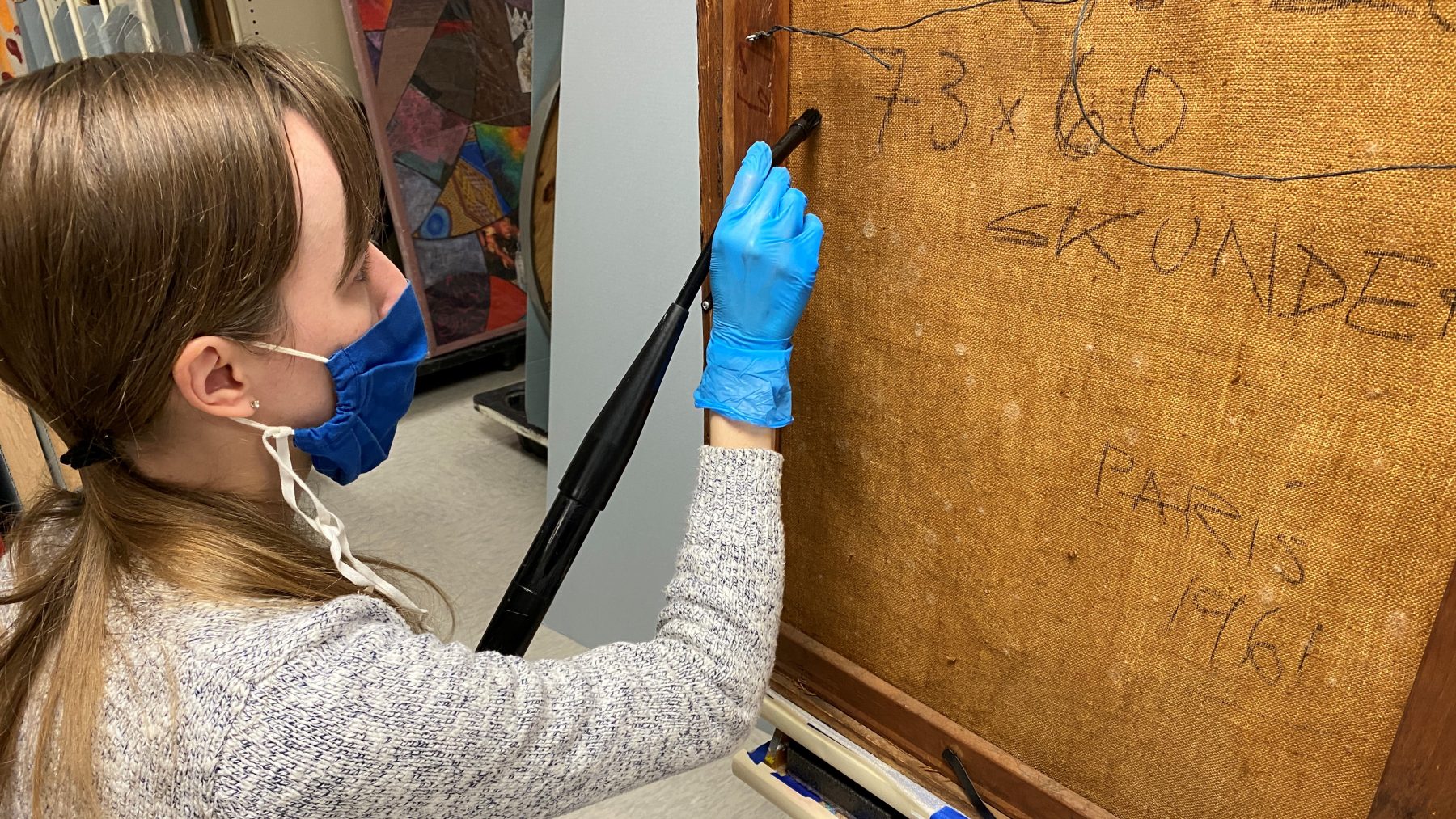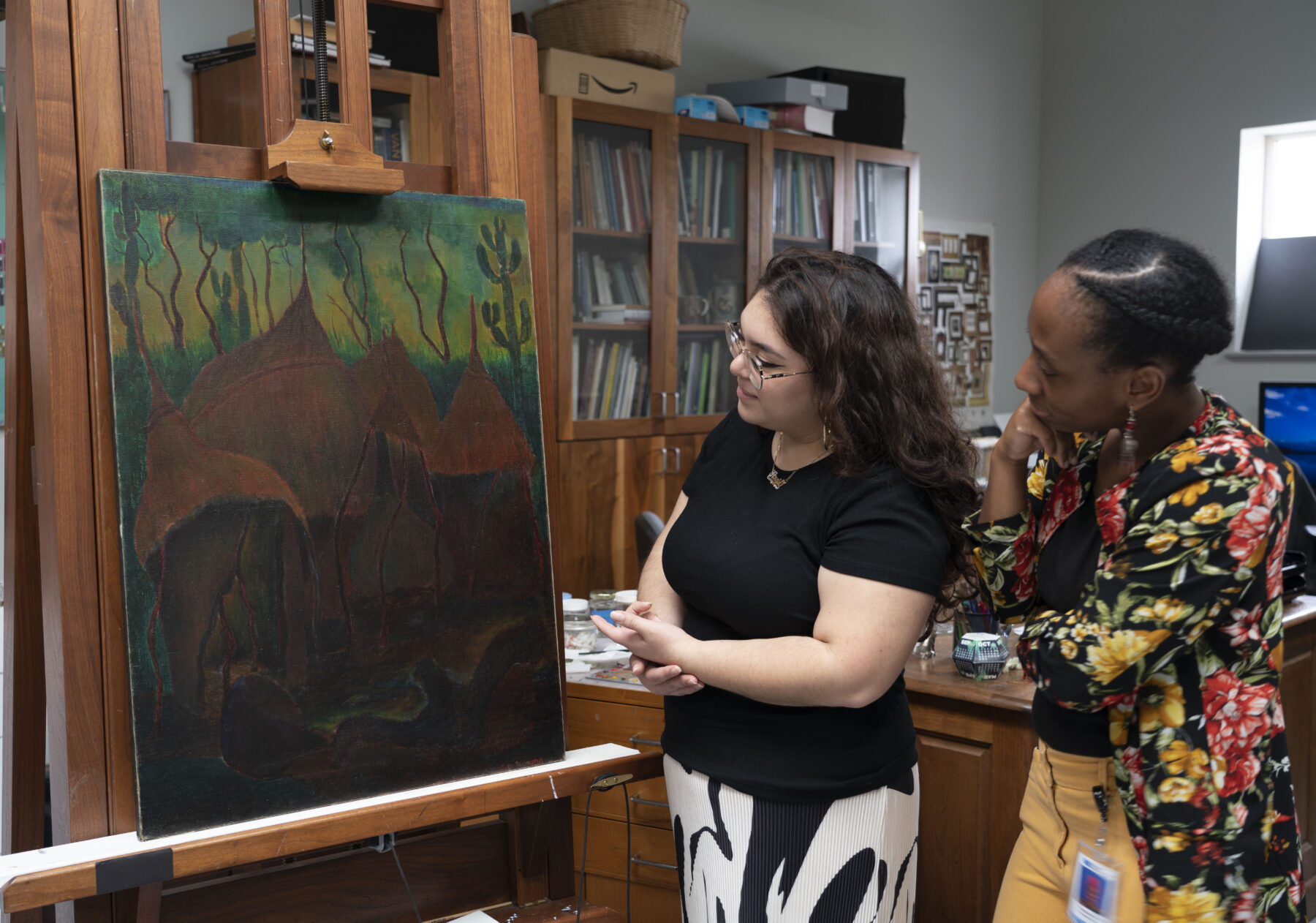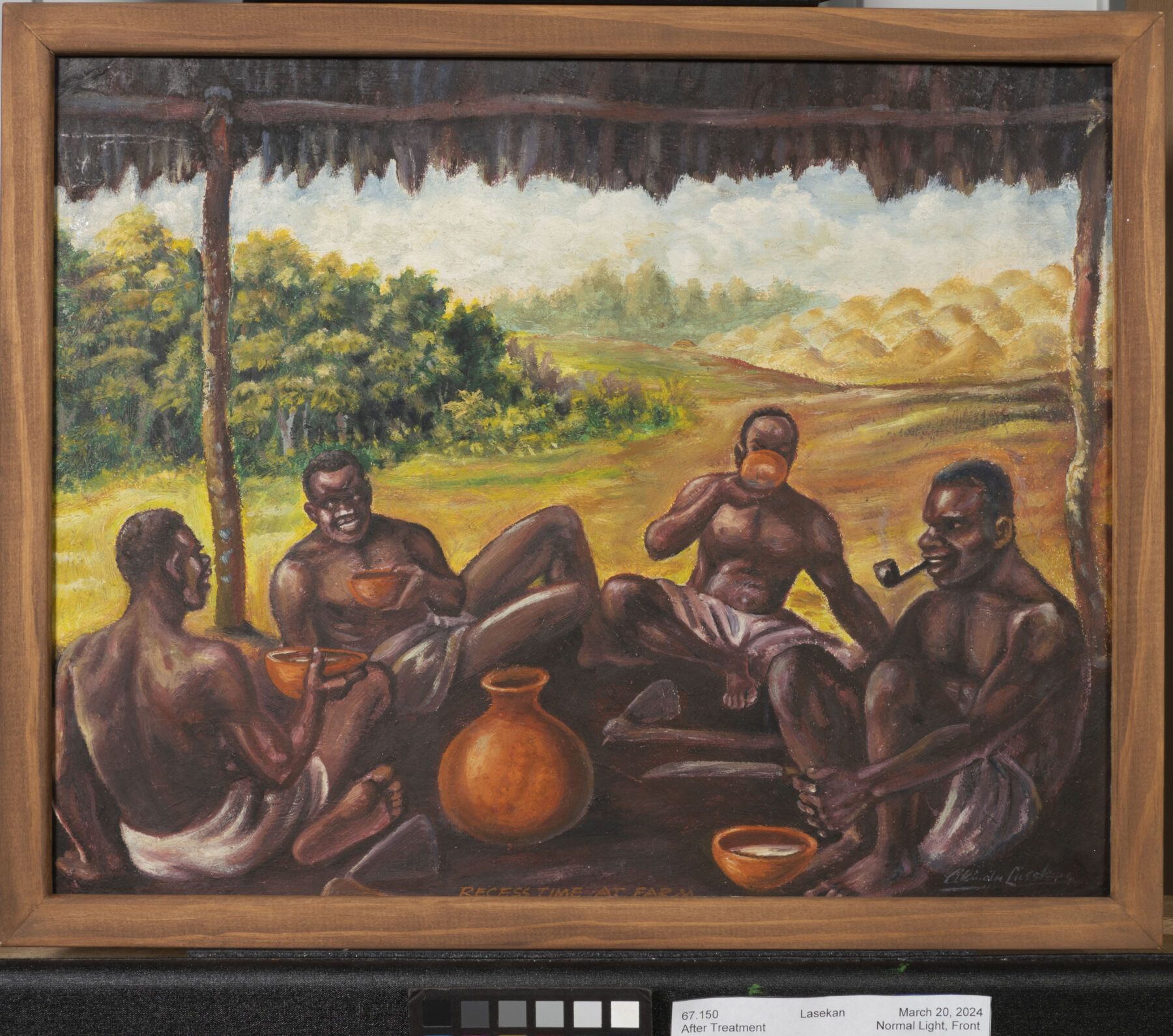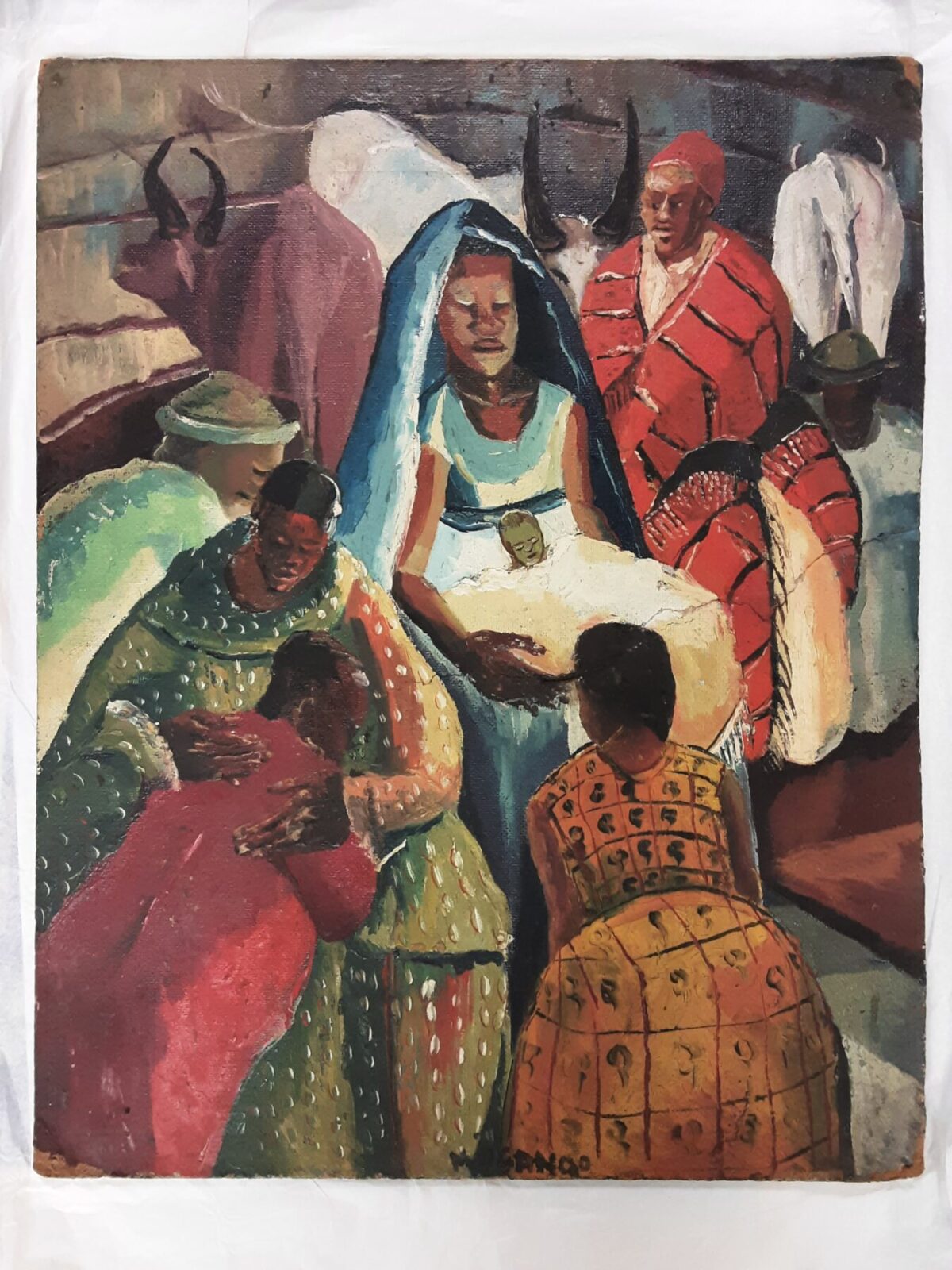Agents of Deterioration and Preventive Conservation


Conservation Fellow, Elizabeth Robson, working in Hampton University Museum's art storage.
Introduction
Since I am undertaking the conservation side of this project, I want to use this blog to provide a look into what conservators do, and why it is such an essential part of museums and other collections. However, before I can begin to treat any of the African paintings we are studying, and way before I have any exciting before and after images to show you, there are many other steps to be completed. I am currently working on surveying all of the art that the Harmon Foundation donated to Hampton University, most of which arrived in 1967, and creating basic condition reports and treatment proposals for each piece. This includes about 90 paintings on canvas, panel, or board; approximately 70 sculptures including metals, ceramics, and wood carvings; and over 300 works on paper. I am categorizing each of these objects in terms of how in need of treatment they are, and some will be moved to the Chrysler in the fall for in-depth conservation work, while others will be rehoused and remain in storage at Hampton University Museum.
What are the Ten Agents?
In the meantime, I have decided to use my blog posts to introduce you to some of the fundamental principles of art conservation, which inform the preventive conservation choices that conservators recommend. One way that conservators conceptualize all the ways that objects can be damaged is called the 10 Agents of Deterioration. Most every cause of damage to a collection falls into one of these 10 categories:
- Physical Forces
- Pests
- Water
- Fire
- Pollution
- Light
- Incorrect Temperature
- Incorrect Relative Humidity
- Thieves/Vandals
- Dissociation

I am going to be discussing each of these factors and how they relate (or don’t) to the Harmon collection of modern African artworks that I have been surveying. I have seen examples of how some of these factors have impacted the collection, but nothing that is beyond repair. There will be some exciting treatments and analysis, so stay tuned as the work progresses!
What is Preventive Conservation?
Understanding the 10 Agents of Deterioration is important because it helps avoid damage to collections, which is called preventive conservation. This term encompasses any actions taken to protect objects without directly intervening or treating them. It includes controlling the environmental conditions, keeping the fire prevention systems up-to-date, having good security, having consistent data collection practices, and much more! Any level of treatment inherently involves some risk, so it is always better to avoid needing to intervene in the first place. In my future posts, I will give descriptions, examples, and basic recommendations in relation to each of these factors, since anyone can participate in improving these aspects of collection preservation. Conservation treatments on the other hand, like the one pictured below, should always be handled by a professional conservator, due to the many factors and risks involved.

References
Canadian Conservation Institute. “Agents of deterioration.” Government of Canada, 26 September 2017.
ICCROM and CCI. “A Guide to Risk Management of Cultural Heritage.” 2016.
“Ten Agents of Deterioration.” AIC Wiki, American Institute for Conservation, 29 October 2020.
Other Blogs:
Haines, Lesley. “Agents of Decay: they’re everywhere!.” Mariners’ Blog, The Mariners’ Museum, 5 August 2020.
Isa, Angelica. “Basic preventive conservation – 3 things to start you off.” Blog, 14 January 2019.
Twitter Threads:
@TeamConserv “100 Things you Didn’t Know About Art Conservation”
@ConservaLlama “The 10 Agents of Deterioration in GIFs”
Explore other articles like this
Art Spotlight: The Abandoned Hut by Mordecai Buluma
In this blog post Angie and Tashae discuss the symbolism behind The Abandoned Hut by Mordecai Buluma as well as the conservation treatment used to prepare it for exhibition.
Tricky Tape and Finicky Frames
In conservation, tape can be tricky! This post discusses the conservation treatment of the painting Recess Time at Farm by Akinola Lasekan.
Christ in the Manger: Virginia’s Most Endangered Artifact?
"Christ in the Manger" by Francis Musangogwantamu, along with nine other selected artifacts from other institutions in Virginia, will be featured in an online public voting competition, which will take place from February 20th to March 3rd, 2024. The artifact that receives the most votes will receive the People’s Choice award and a $1,000 grant to be put towards the object’s conservation treatment.



